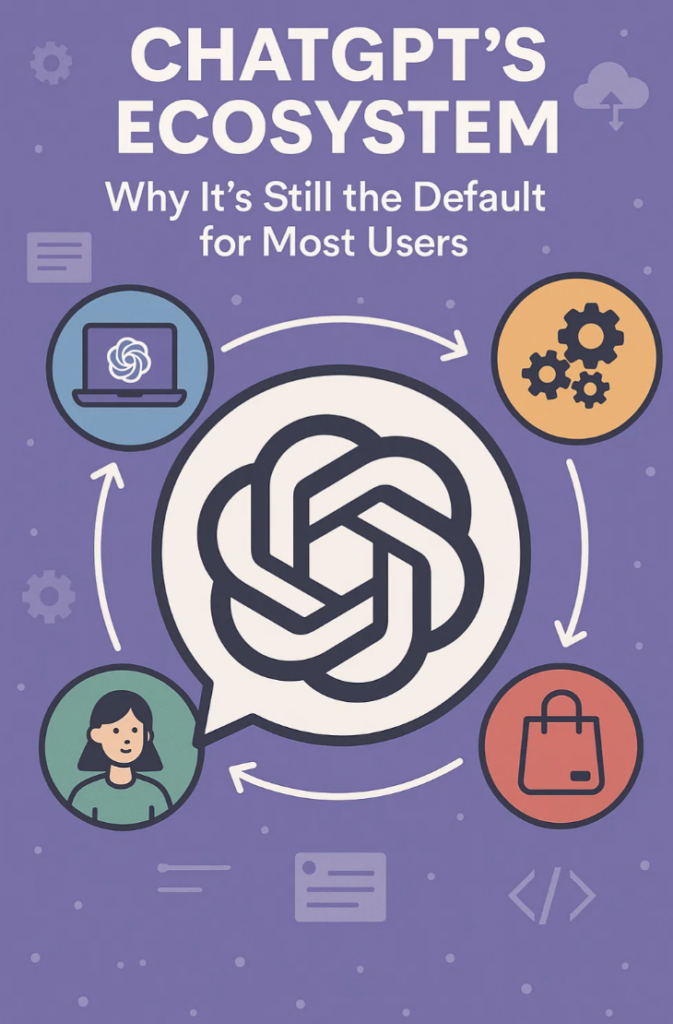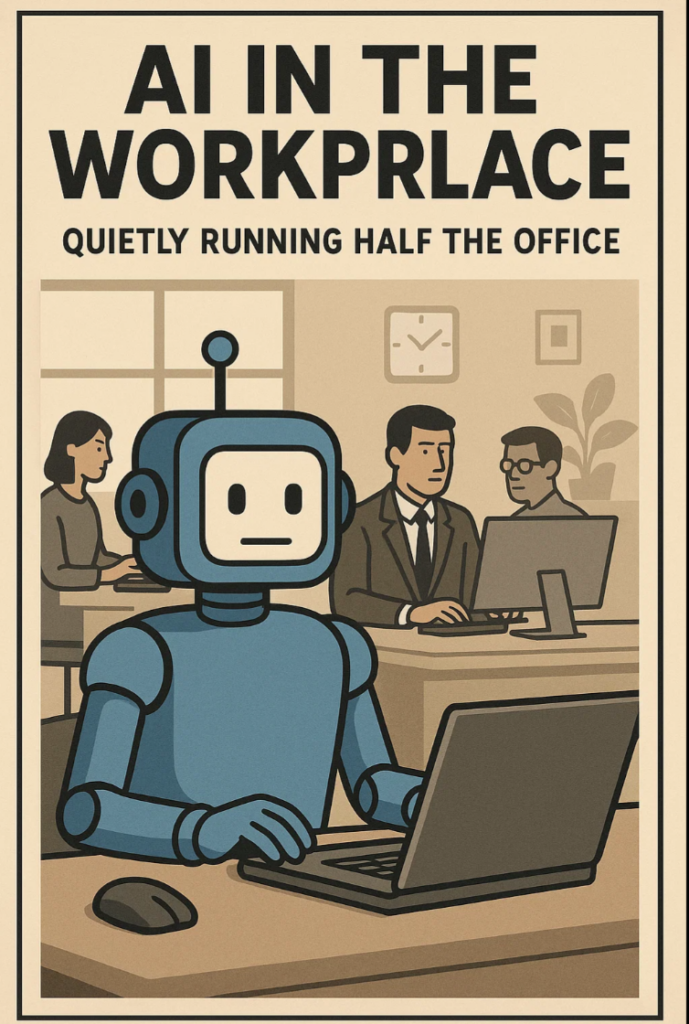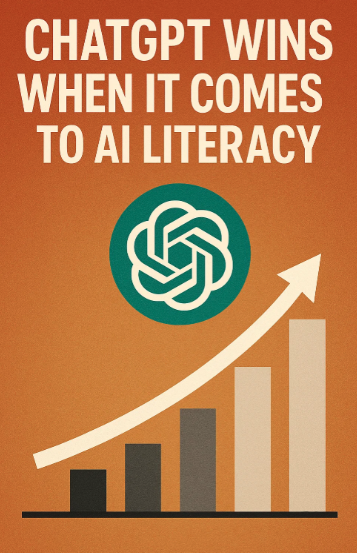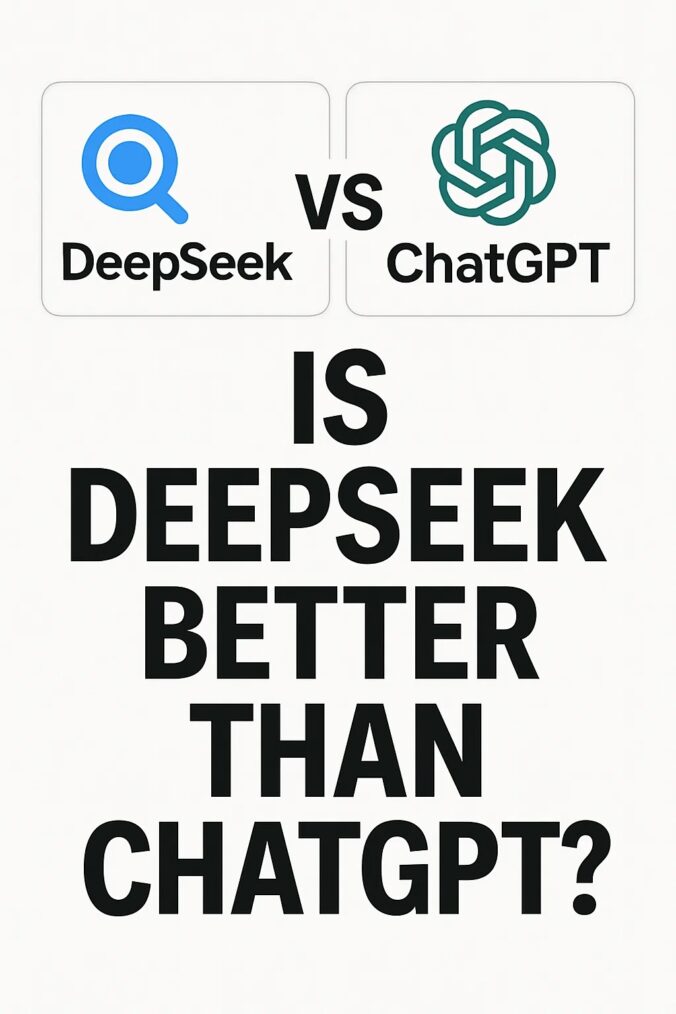Let’s discuss the AI chatbots out there and think about Deepseek versus ChatGPT. There are a lot of debates out there about which one to use. I’ve worked at Apple, Microsoft and Meta, and was into AI way before it became a trendy topic. That being said, today, I’d like to discuss Deepseek and if it is really better than other AI chatbots out
Is Deepseek Better Than ChatGPT? Here’s What the Hype Misses
This isn’t just a model comparison. It’s a peek into the AI arms race — and what it means for how we actually use these tools. Like many things, AI is just another tool. But, these days, it comes in all sorts of variations. From Grok, to Poe, to T3 to ChatGPT – we have options now. And really, beyond the hype, it comes down to how a particular AI model fits your needs, personally and professionally.
Personally, I can’t stand Claude. It gives me inaccurate answers and is unable to do the more advanced prompt commands that ChatGPT can do. Speaking of which, looking to elevate your ChatGPT skills? Click here to check out: Top 21 Prompts to Accelerate Your Marketing
ChatGPT Isn’t Just a Model. It’s a Mindset.
ChatGPT isn’t just popular because of its outputs. It’s popular because of how it changes the way we think. While Deepseek might flex on performance benchmarks, ChatGPT has reshaped workflows across industries. That’s a different kind of power. A power that moves through culture, not just code.
The Origins of ChatGPT: Why It Became a Verb
Nobody says “Let’s Deepseek that.” People ChatGPT everything — from love letters to lawsuit defenses. This linguistic dominance matters. It tells us that LLMs (language learning models) aren’t just good. It’s ubiquitous. The name alone has become shorthand for AI, which means Deepseek is fighting a brand battle even before a technical one.
How Deepseek Challenges ChatGPT’s Dominance
Deepseek enters the chat with major claims: longer context windows, better coding fluency, multilingual mastery. And technically, it’s formidable. It’s Open Source. It’s nimble. It’s respected in developer circles. But those are specs. Specs don’t always translate to adoption. Just ask Google+.
ChatGPT’s Ecosystem: Why It’s Still the Default for Most Users

ChatGPT doesn’t operate in a vacuum. It’s got OpenAI’s infrastructure, Microsoft’s distribution, and the momentum of hundreds of millions of daily prompts. Plugins, custom GPTs, code interpreters, Whisper, DALL-E integration. It’s not just a model; it’s a toolbox. And ecosystems have inertia.
Depending on the task, Deepseek can be faster. Especially in clean code generation. But ChatGPT often wins on nuance and flexibility. When you’re trying to explain tax implications to a client, not just refactor Python, this LLM is tuning to human language gives it the edge.
This one’s hard to quantify. But ChatGPT has a UX polish and tone calibration that makes it feel like a helpful co-worker. Deepseek often feels like you’re beta testing with a very smart but emotionally unavailable intern.
AI in the Workplace: Quietly Running Half the Office

Ask any marketer, ops person, or solo founder what tools they use most. If AI’s involved, ChatGPT is somewhere in the stack — even if it’s not advertised. Internal SOPs. First drafts. Strategy notes. LLMs are the silent partner in more businesses than we realize.
ChatGPT rewards casual language. Deepseek often feels like it wants your prompts formatted like an API call. That’s not a knock. Just a note. The learning curve matters. Most people aren’t prompt engineers; they’re trying to get through Thursday.
Can Deepseek Really Replace ChatGPT in Business Settings?
Short answer: no. Long answer: not unless it matches ChatGPT’s tooling, trust layer, and integration path. This chatbot isn’t just smart. It’s situated. That matters when people’s workflows and reputations are on the line.
The UX Gap
Deepseek is technically impressive. But OpenAI’s chatbot feels like a co-worker who doesn’t eat your snacks or slack off on Fridays. It’s available. Predictable. Friendly. And in business, that often beats raw performance.
Language Learning with AI Chatbots
This chatbot adjusts to tone, pacing, and cultural context. It’s been fine-tuned for warmth and range. Deepseek is catching up — but it’s not there yet. For ESL learners, coaches, or translators, that nuance makes a big difference.
Even when they code in Deepseek, developers plan and scaffold in ChatGPT. That says a lot. This LLM supports thinking, not just output. And when you’re designing systems, that’s where the real value lies.
Why ChatGPT Wins When It Comes to AI Literacy

This chatbot has helped millions of non-coders “get” AI. It’s built trust. It’s removed the shame of asking basic questions. It’s accessible. Deepseek might have better math scores, but ChatGPT has better human scores. And lets face it, it’s simply easier to use. How much do you trust AI tools?
This is where most comparisons fall short. ChatGPT isn’t just evaluated on its outputs. It’s trusted to guide, to filter, to suggest. That’s emotional UX. And it’s hard to replicate.
AI and Brand Voice: Why Businesses Build Around It
Brand voice matters. And OpenAI’s chatbot is easy to train, fine-tune, and embed in workflows that require consistency. From customer service to content creation, it adapts to tone, audience, and use case. Deepseek hasn’t proven that depth of context retention yet.
ChatGPT vs Deepseek in Real-World Client Scenarios
We ran both through the same prompt suite for a solopreneur building a coaching business. Deepseek gave sharper outputs in narrow cases (e.g., summarizing PDFs). But ChatGPT understood the context, the brand tone, and layered suggestions in a way that felt like strategic consulting, not just task execution.
AI in Content Strategy: The Repeatable Edge
Need a blog post, headline options, five Instagram captions, and a LinkedIn carousel? ChatGPT is the only one delivering that kind of repeatable, adaptable content pipeline. Deepseek might ace the one-off, but can’t scale it as well.
The ChatGPT API: Infrastructure That Makes It Sticky
Developers love this AI tool because it plugs into everything. Zapier, Notion, Airtable, custom dashboards. Deepseek’s open-source nature is exciting, but its lack of plug-and-play tooling holds it back in enterprise scenarios.
Community, Culture, and ChatGPT
ChatGPT has memes. Twitter threads. Use cases that cross generational lines. It has become a cultural shorthand for AI. Deepseek doesn’t have that — yet. And cultural capital matters.
Choosing the Right Tools in an AI-Driven World
ChatGPT isn’t the best because it’s the smartest. It’s the best because it’s used. It’s accessible, teachable, and trusted. Deepseek might improve. But ChatGPT already integrated into how we think. That’s not just hard to beat — it’s hard to displace.
The future isn’t just about which model wins a benchmark. It’s about which model feels like a partner. Right now? That’s still ChatGPT.
As we navigate the evolving landscape of artificial intelligence, it’s essential to consider both the opportunities and challenges it presents. Futurists like Ray Kurzweil have long predicted a future where AI enhances human capabilities, leading to unprecedented advancements in various fields. However, this optimism is tempered by concerns from thinkers like Yuval Noah Harari, who warns about the potential for AI to disrupt societies and economies if not managed responsibly.
Scott Galloway, a professor at NYU Stern School of Business, offers a nuanced perspective on AI’s impact, particularly on young men. He expresses concern that AI could exacerbate loneliness by providing low-risk, high-reward alternatives to real human relationships.

Galloway notes, “A big concern around AI is that it can fast-track loneliness… giving men even more excuses not to engage in the really difficult work of relationships.”
This highlights a broader issue: while AI can offer convenience and efficiency, it may also lead to unintended social consequences if it replaces rather than augments human interaction. The challenge lies in integrating AI into our lives in ways that enhance our humanity rather than diminish it.
Instagram
Given that AI is here to stay, it’s crucial to approach it with a balanced mindset. This means selecting tools that not only offer technical excellence but also align with our values and promote meaningful engagement. By doing so, we can harness the benefits of AI while mitigating its potential downsides, ensuring it serves as a tool for empowerment rather than isolation.
Looking for a course on how to use AI better? Look no further:
Train ChatGPT to Think Like Your Business—in Under 10 Minutes

In this video course you’ll learn how to teach ChatGPT to think like your business, using a simple template anyone can reuse for marketing, sales, or strategy.
Stop getting generic AI output.
This quick training shows you how to “prime” ChatGPT to act like your strategist or marketer—with just one reusable prompt template.
No coding. No plugins. Just a smart system you can use today.
How to Use ChatGPT – AI Made Simple, No Tech Skills Needed

Want a book instead of a video course on getting ChatGPT to make your business more money?
This is a beginner-friendly guide that shows you how to get real business value from ChatGPT—no coding, no complex setup.
Discover how to write better prompts, get smarter answers, and work faster today. Copy and paste prompts that get you quick success are included.
Want to network on LinkedIn? Read more here





